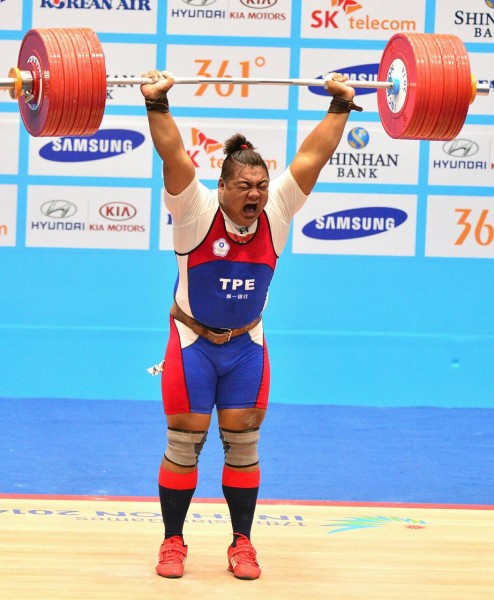上兩周我回到了台灣
第一周忙著協助精繪解剖的團隊在亞洲的首次教學
第二周則是我個人首次的講座課程"呼吸的評估與動作整合"
Couple weeks ago, I came back to Taiwan for 12 days.
I was honor to assist the very first Immaculate Dissection Course in Asia in the first week.
At the second week, I gave my first seminar in Taiwan.
It's the one-day course about breathing assessment and movement integration.
在四天的課程當中
有許多學員提出了非常棒的觀點以及疑問
其中飛熊大特別提出了關於舉重與健力呼吸訓練方式的差異
下面會用課程內提到的內容以及近期的科學研究來討論
During the 4 seminars in 3 different cities, there were many great questions from attendees.
Especially in Tainan, I had a great discussion with FlyingBear.
He's devoted in promoting weight lifting exercise in Taiwan.
We talked about why there's different breathing strategies between weight lifting and powerlifting.
That's a fascinating question I'd like to share and discuss with some material I covered during seminar
如果你搜尋運動時如何呼吸
或者是請教健身房的巨巨
你一定會得到各式各樣的答案
"向心吸氣, 離心吐氣" "吸氣, 閉氣, 用力, 吐氣" "用力吐氣, 放鬆吸氣"
這些都是常見的模式
正確的答案是 不.一.定
If you google "How to breath during training/exercising"
Or asking bros in the gym
You surely can get all kind of answers such as
"Concentric with inhale, Eccentric with exhale"
"Inhale, hold, exhale"
"Exhale while exerting, inhale while relaxing"
That's all common patterns you'll see in the gym.
My answers is "It depends".
就像標準動作需要依照每個人的個體差異來修正
呼吸方式也需要依照你的訓練目的而調整
Just like the standard movement should be modified to fit individual differences.
Breathing pattern should be adjusted with your purpose.
用健力與舉重做一個簡單的比較
舉重的項目有挺舉與抓舉兩項
而健力則是硬舉, 深蹲, 以及臥推三種
Let's back to the question about weight lifting and power lifting.
The weight lifting includes: Snatch, Clean and Jerk.
The powerlifting includes: Deadlift, Squat, and Bench Press.
這兩者間除了動作的差異以外
最大的差異性在於速度
或者我們可以說瞬間爆發力
Other than the movement itself,
The biggest difference between those two competition is SPEED
Or we can mention to POWER
Dr. M. Hagins做了一系列腹內壓與呼吸之間關聯性的研究
在研究中, 吸氣並且閉氣時可以產生最大腹內壓
並且在舉重物的過程中, 腹內壓也與承重有相關性
Dr. M. Hagins had a series of researches about breathing and IAP.
In her study, the maximum IAP can be achieved with inhalation and hold.
And the lifting load has a positive relationship with IAP
講座中我們也提到
吸氣後可以達到最穩定的狀態
在核心穩定的情況下
四肢才能夠發揮最大力量
在健力競賽需要挑戰單次的最大極限的情況下
吸氣後閉氣產生脊椎剛性與最大腹內壓
同時利用努責效應
可以讓我們舉起最大重量
In my seminar, we talked about the same concept of IAP
Once you inhale and hold, you can get maximum core stability.
Under that stable condition, the extremities can exert maximum strength.
In the powerlifting competition, you need to challenge body maximum loading in one time.
That's the time you need to inhale and hold to increase spine rigidity and IAP.
Also, this technique can cooperate with Valsalva maneuvre.
Then you can lift, squat, or press the maximum weight in a steady condition.
另外一種會產生最大腹內壓的方式
就是強烈的腹部肌肉收縮
最容易理解的代表動作就是咳嗽
The other way to create maximum IAP is strongly contraction the abdominal muscles.
The typical way to explain it is coughing. That's sometime why your disc herniated after coughing.
在需要肢體協調以及快速的運動中許多人會自然使用這個技巧
經典的代表例子就是網球擊球時的吼聲或者是武術中攻擊時的出聲
除了有心理加強的作用外
這種方式可以產生腹內壓的同時將核心的力量送到四肢
產生瞬間的最大出力的同時又不會失去動作的協調
因此舉重的訓練反而會強調吐氣的重要性
Many people will use this technique in the sport that need body coordination and speed.
Such as the yelling while smashing tennis or fizzing while punching.
This sound can not only provide the mental enhancement,
but also create a strong force that can flow to your extremities.
It produce the maximum force in the short period without impede the movement coordination.
That's the pattern what the weight lifting is aiming for.
呼吸的模式取決於你的使用目的
只要能夠知道自己該使用的方式為何
就是正確的答案
Which strategy you should use is depend on your purpose.
As long as you know why you breath in this particular pattern,
then it's your correct answer.
正確的執行與適合的選擇才是關鍵
"The keys are accuracy and adequacy"
本著作由I-Chen Liu, PT, MS製作,以創用CC 姓名標示-非商業性-相同方式分享 4.0 國際 授權條款釋出。




No comments:
Post a Comment